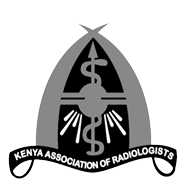Radiology trainees in Sudan share similar interests and influencing and restricting factors when pursuing subspecialty training, as reported in the literature. Unlike other countries, females predominate in the field of radiology training in Sudan at the moment. Radiologists from Sudan who are interested in subspecializing usually travel abroad for training; and once they find better prospects, many of them may not return. Programs offering subspecialization locally could mitigate the attrition of radiologists in Sudan. When designing subspecialty training programs in Sudan, stakeholders should use knowledge of influential factors and understanding of subspecialty decision trends among radiology trainees as a reference point. To the best of our knowledge, this study is the first of its kind to be conducted in this field in Sudan.
Introduction
Subspecialization involves devoting intellectual resources toward detailed learning about a narrower and specific area of a specialty [1]. The radiology subspecialty must comprise a distinct area of knowledge that cannot be incorporated into the general radiology curriculum. In addition, it must have unique applicability backed up by evidence of improved patient care that a subspecialist’s skillset can offer, and structured formal training with apparent benefits that do not negatively impact the existing general radiology training or other radiology subspecialties [2]. Many factors that drive the interest of a radiologist in pursuing further fellowship training have been identified in the literature, some of which are personal, such as the chance of improving career prospects, while others are job-related [3-8].
Africa suffers from a chronic lack of access to radiology training programs, both at the level of the diagnostic radiology (DR) residency and the radiology specialty (RS) fellowship. It has been shown that only 18 of the 54 sovereign African nations (excluding disputed territories) report having well-established DR residency programs, and only eight of those nations report having any subspecialty programs, with information being readily available for only five of them: Egypt, Ethiopia, Kenya, South Africa, and Tanzania [2]. In Africa, radiology postgraduate residency and subspecialization appear to have lagged behind the rest of the world [2].
Radiology training was started in Sudan in 1992 at the University of Khartoum. However, it was only in 2003 that the program came under the regulatory authority of the Sudan Medical Specialization Board (SMSB), the body responsible for medical specialty training in Sudan [9]. Sudan, a developing African nation, faces numerous obstacles to successfully adopting radiology subspecialization. These challenges include a lack of financial resources and knowledge, inadequate infrastructure and equipment, politics, and the emigration of radiologists to foreign countries [2]. Only four vascular interventional radiologists (VIR) are currently employed in Sudan (all of them practicing in the country’s capital, Khartoum), which illustrates the current state of radiology fellowship in the country. All interventionists in Sudan have received their training in either Jordan or Malaysia since an interventional radiology training fellowship is not available in the country [9]. There is scarce data on radiologists in Sudan. Currently, the SMSB does not offer a subspecialty training program.

